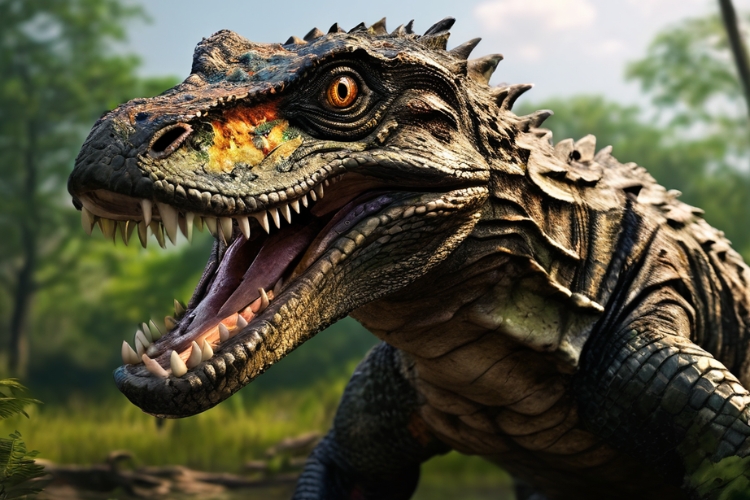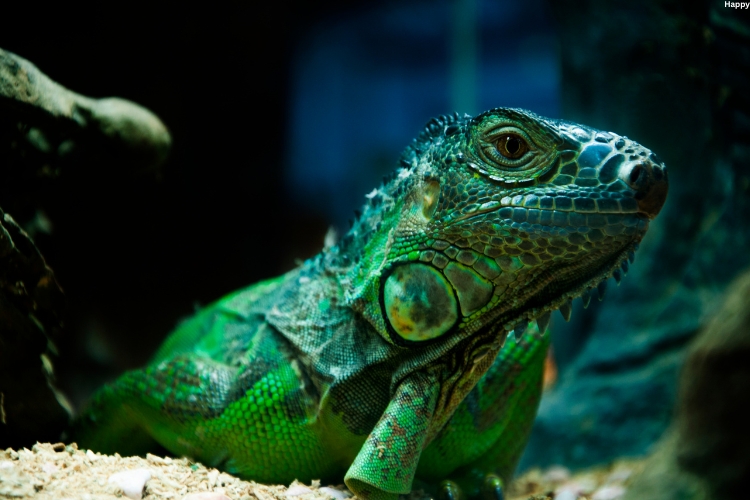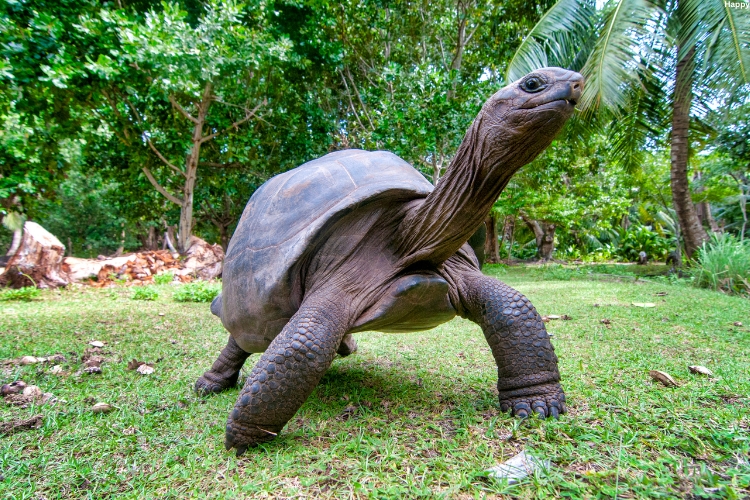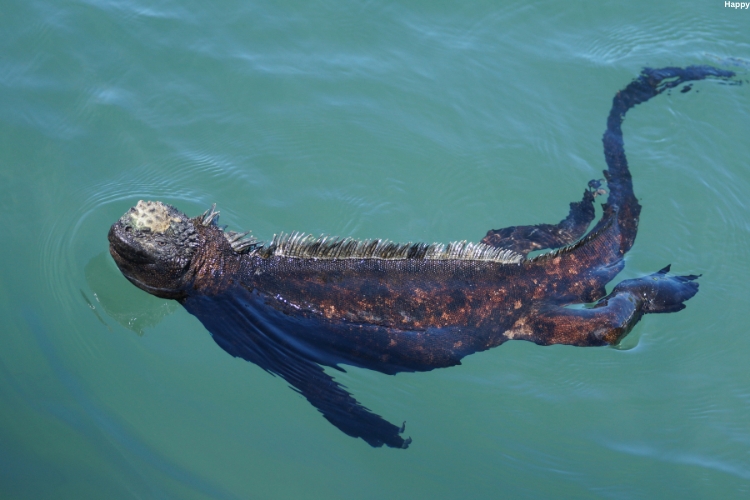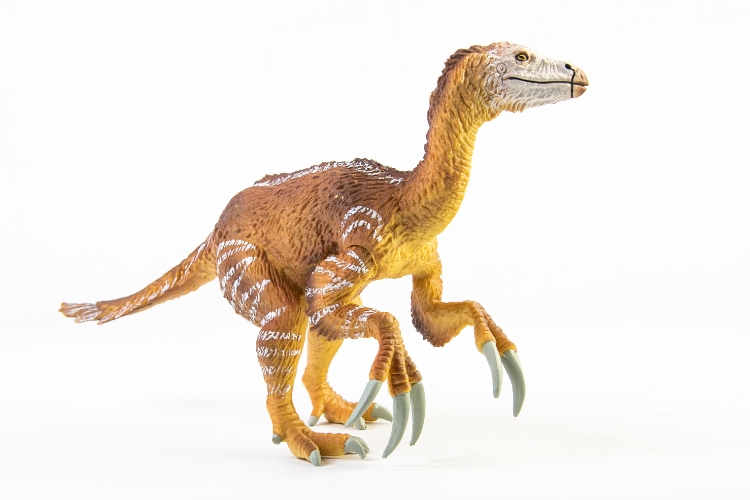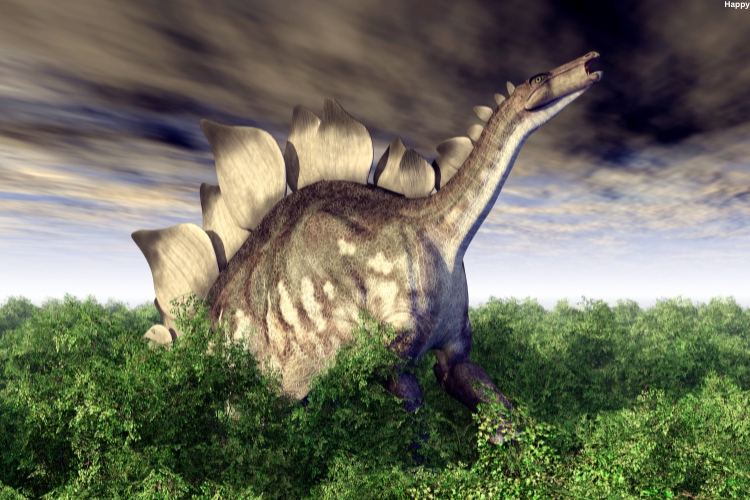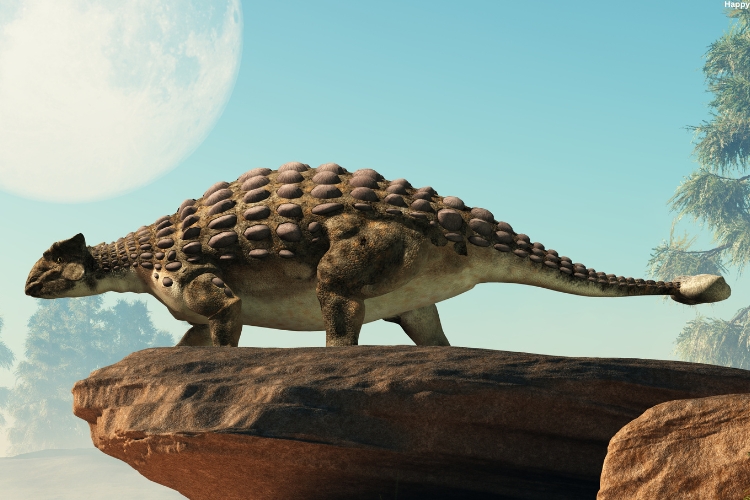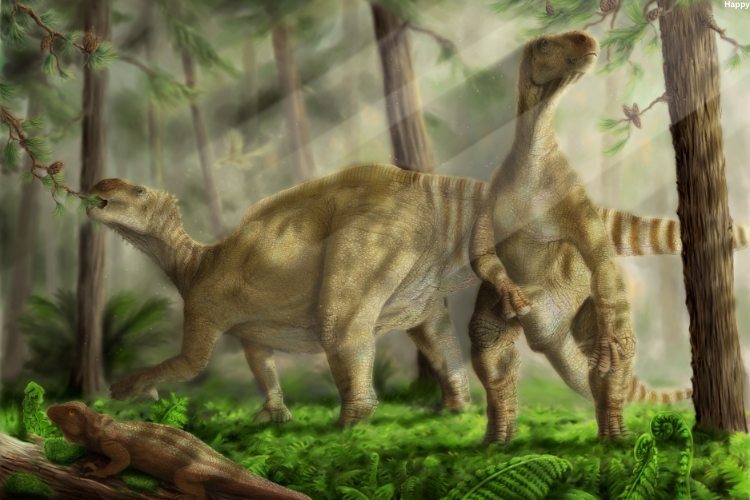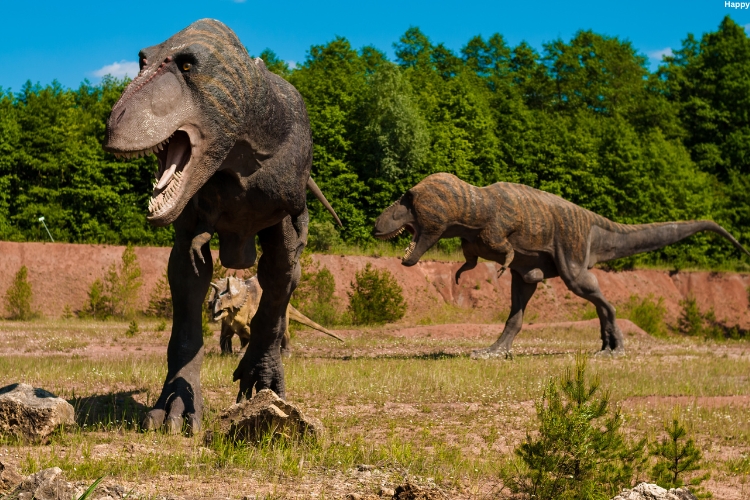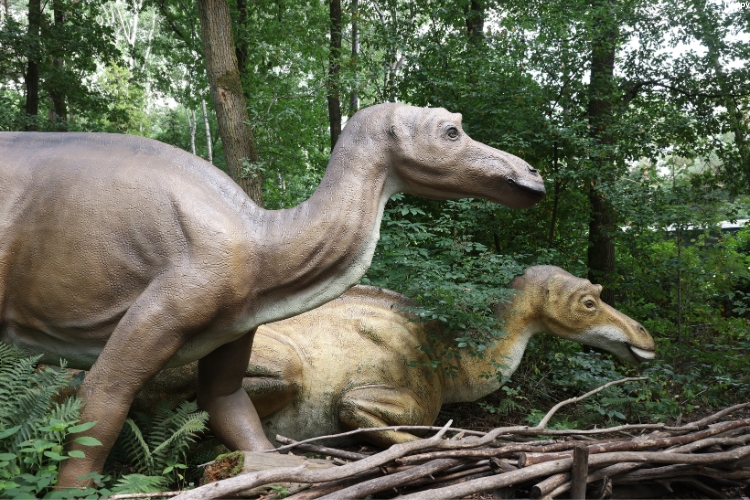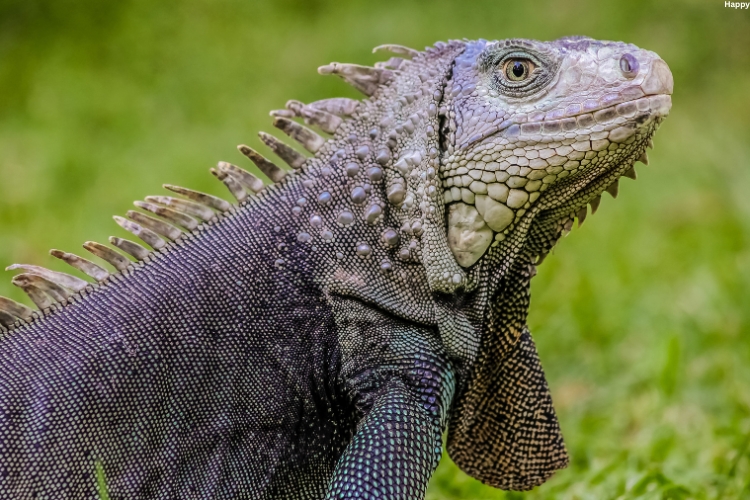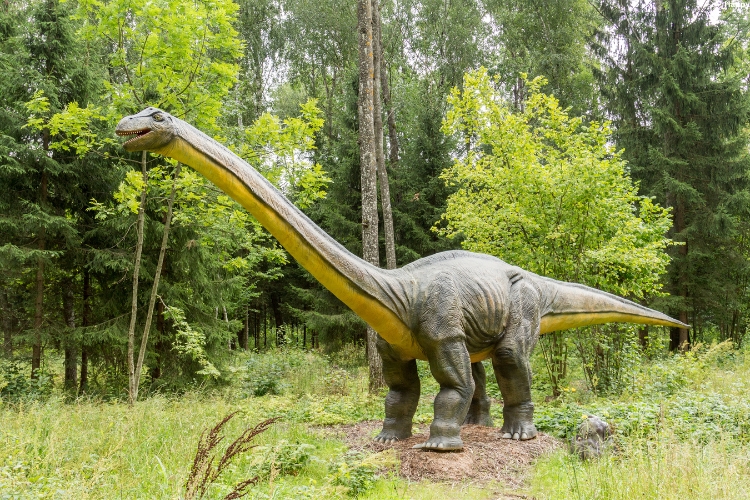In the vast realm of reptiles, herbivores play a crucial role in shaping ecosystems and maintaining the balance of nature. These plant-eating giants have evolved remarkable adaptations to thrive on a diet of vegetation, from ancient times to the present day.
In this blog post, we’ll explore the fascinating world of 20 large herbivorous reptiles, uncovering their unique characteristics, habitats, and ecological significance.
Understanding Herbivorous Reptiles
Before we dive into our list of impressive plant-eaters, let’s establish what defines a herbivorous reptile:
- Diet: Primarily or exclusively consumes plant matter
- Digestive system: Adapted for breaking down tough plant fibers
- Dentition: Specialized teeth for grinding or cropping vegetation
- Behavior: Often social or semi-social, with adaptations for foraging
Herbivorous reptiles come in various sizes, from small iguanas to massive dinosaurs of the past. For this article, we’ll focus on large species, both extinct and extant, that have captured the imagination of scientists and nature enthusiasts alike.
20 Remarkable Large Herbivorous Reptiles
1. Galapagos Giant Tortoise (Chelonoidis niger)
- Size: Up to 5 feet long and 919 pounds
- Habitat: Galapagos Islands
- Diet: Cacti, grasses, leaves, and fruit
The Galapagos Giant Tortoise is an iconic symbol of the Galapagos Islands and a prime example of island gigantism. These gentle giants can live for over 100 years and play a crucial role in seed dispersal within their ecosystem.
2. Aldabra Giant Tortoise (Aldabrachelys gigantea)
- Size: Up to 4 feet long and 550 pounds
- Habitat: Aldabra Atoll, Seychelles
- Diet: Grasses, leaves, and woody plant stems
Similar to their Galapagos cousins, Aldabra Giant Tortoises are among the largest tortoises in the world. They’re known for their distinctive domed shells and long necks, which allow them to reach vegetation up to 3 feet off the ground.
3. Green Iguana (Iguana iguana)
- Size: Up to 6.5 feet long and 20 pounds
- Habitat: Central and South America, Caribbean Islands
- Diet: Leaves, flowers, fruit
While not as massive as some other entries on this list, the Green Iguana is still one of the largest herbivorous lizards alive today. These arboreal reptiles are excellent swimmers and can drop from trees into water to escape predators.
4. Marine Iguana (Amblyrhynchus cristatus)
- Size: Up to 4.3 feet long and 26 pounds
- Habitat: Galapagos Islands
- Diet: Marine algae and seaweed
The Marine Iguana is the only lizard species known to forage in the sea. These unique reptiles can dive up to 65 feet deep to graze on underwater vegetation, and have specialized glands to expel excess salt from their bodies.
5. Rhinoceros Iguana (Cyclura cornuta)
- Size: Up to 4.5 feet long and 20 pounds
- Habitat: Hispaniola (Dominican Republic and Haiti)
- Diet: Leaves, flowers, fruits, and occasionally insects
Named for their distinctive horned snouts, Rhinoceros Iguanas are powerful and intelligent lizards. They play an important role in seed dispersal and are considered a keystone species in their native habitat.
6. Argentinosaurus (extinct)
- Size: Estimated up to 115 feet long and 80 tons
- Habitat: Argentina, Late Cretaceous period
- Diet: Likely conifers, ginkgos, and other prehistoric plants
Argentinosaurus was one of the largest known land animals ever to exist. This titanosaur sauropod dinosaur browsed on vegetation high in the tree canopy, using its long neck to reach food sources inaccessible to other herbivores.
7. Therizinosaurus (extinct)
- Size: Up to 33 feet long and 5 tons
- Habitat: Mongolia, Late Cretaceous period
- Diet: Plants, possibly fruits and leaves
Therizinosaurus was a bizarre theropod dinosaur with massive claws on its hands, likely used for pulling down branches and defense. Despite its fearsome appearance, it was a peaceful herbivore.
8. Stegosaurus (extinct)
- Size: Up to 30 feet long and 5 tons
- Habitat: Western North America, Late Jurassic period
- Diet: Low-growing plants, possibly including ferns and mosses
Recognizable by its row of plates along its back and spiked tail, Stegosaurus was a heavily-built herbivore. Its small head and brain size have made it a subject of fascination among paleontologists.
9. Triceratops (extinct)
- Size: Up to 30 feet long and 12 tons
- Habitat: North America, Late Cretaceous period
- Diet: Cycads, palms, and other tough vegetation
With its distinctive three-horned face and large bony frill, Triceratops was one of the most recognizable dinosaurs. Its powerful beak and rows of teeth were well-adapted for processing fibrous plant material.
10. Ankylosaurus (extinct)
- Size: Up to 20-30 feet long and 4-6 tons
- Habitat: North America, Late Cretaceous period
- Diet: Low-growing plants
Ankylosaurus was a living tank, covered in bony armor and wielding a club-like tail. This herbivore likely fed on low-growing vegetation, using its horny beak to crop plants close to the ground.
11. Deinocheirus (extinct)
- Size: Up to 36 feet long and 6.4 tons
- Habitat: Mongolia, Late Cretaceous period
- Diet: Plants, possibly fish and small animals
Deinocheirus was an unusual ornithomimosaur with a duck-like bill and long arms. While it may have been omnivorous, plants likely made up a significant portion of its diet.
12. Plateosaurus (extinct)
- Size: Up to 33 feet long and 4 tons
- Habitat: Europe, Late Triassic period
- Diet: Ferns, cycads, and conifers
Plateosaurus was one of the earliest large herbivorous dinosaurs. It could likely rear up on its hind legs to reach higher vegetation, representing an important step in the evolution of sauropods.
13. Iguanodon (extinct)
- Size: Up to 33 feet long and 4-5 tons
- Habitat: Europe, North America, and Asia, Early Cretaceous period
- Diet: Cycads, conifers, and other plants
Iguanodon was one of the first dinosaurs to be scientifically described. It had a horny beak and thumb spikes, possibly used for defense or foraging.
14. Parasaurolophus (extinct)
- Size: Up to 33 feet long and 2.5 tons
- Habitat: North America, Late Cretaceous period
- Diet: Pine needles, leaves, and twigs
Famous for its long, hollow head crest, Parasaurolophus was a hadrosaur or “duck-billed” dinosaur. The crest may have been used for visual display and producing sounds.
15. Diplodocus (extinct)
- Size: Up to 108 feet long and 25 tons
- Habitat: North America, Late Jurassic period
- Diet: Ferns, conifers, and other plants
Diplodocus was one of the longest dinosaurs known, with a long neck and tail. It likely used its peg-like teeth to strip leaves from branches.
16. Brachiosaurus (extinct)
- Size: Up to 85 feet long and 50 tons
- Habitat: North America and Africa, Late Jurassic period
- Diet: Conifers, ginkgoes, and cycads
Brachiosaurus was a high-browsing sauropod with a giraffe-like stance. Its nostrils were located on the top of its head, leading to past speculation that it was aquatic.
17. Edmontosaurus (extinct)
- Size: Up to 43 feet long and 4 tons
- Habitat: North America, Late Cretaceous period
- Diet: Conifers, cycads, and other plants
Edmontosaurus was a large hadrosaur with a duck-like bill. It had batteries of teeth well-suited for grinding tough plant material.
18. Protoceratops (extinct)
- Size: Up to 6 feet long and 400 pounds
- Habitat: Mongolia, Late Cretaceous period
- Diet: Tough desert plants
Protoceratops was a small ceratopsian dinosaur, an early relative of Triceratops. It had a distinctive frill and beak-like mouth adapted for a herbivorous diet.
19. Maiasaura (extinct)
- Size: Up to 30 feet long and 3-4 tons
- Habitat: North America, Late Cretaceous period
- Diet: Conifer needles, leaves, and twigs
Maiasaura, meaning “good mother lizard,” provides some of the best evidence for parental care in dinosaurs. These herbivores likely lived in large herds.
20. Shringasaurus (extinct)
- Size: Up to 12 feet long (estimated)
- Habitat: India, Middle Triassic period
- Diet: Likely plants
Shringasaurus was a recently discovered archosauromorph reptile with a pair of forward-facing horns on its head, convergently similar to later ceratopsian dinosaurs.
Comparative Table of Large Herbivorous Reptiles
| Name | Time Period | Max Length (ft) | Max Weight (tons) | Notable Features |
|---|---|---|---|---|
| Galapagos Giant Tortoise | Present | 5 | 0.46 | Domed shell, longevity |
| Argentinosaurus | Late Cretaceous | 115 | 80 | Possibly largest land animal |
| Green Iguana | Present | 6.5 | 0.01 | Arboreal, excellent swimmer |
| Therizinosaurus | Late Cretaceous | 33 | 5 | Massive hand claws |
| Triceratops | Late Cretaceous | 30 | 12 | Three-horned face, large frill |
| Diplodocus | Late Jurassic | 108 | 25 | Extremely long neck and tail |
| Brachiosaurus | Late Jurassic | 85 | 50 | High-browsing, giraffe-like stance |
Ecological Significance of Large Herbivorous Reptiles
Large herbivorous reptiles, both extinct and extant, play crucial roles in their ecosystems:
- Seed dispersal: Many herbivorous reptiles consume fruits and disperse seeds through their droppings, aiding in plant reproduction and distribution.
- Vegetation control: By consuming large quantities of plant matter, these animals help prevent any single plant species from dominating an ecosystem.
- Nutrient cycling: Their droppings enrich the soil, providing essential nutrients for plant growth.
- Habitat modification: Large herbivores can create pathways through dense vegetation, benefiting smaller animals.
- Food source: While herbivores themselves, these animals often serve as prey for carnivorous species, supporting the food web.
Conservation Status and Challenges
Many extant large herbivorous reptiles face significant conservation challenges:
- Habitat loss: Deforestation and urban development threaten the natural habitats of species like the Green Iguana and Rhinoceros Iguana.
- Climate change: Rising temperatures and changing weather patterns affect the delicate balance of ecosystems, impacting reptile populations.
- Invasive species: Non-native plants and animals can outcompete or prey upon native herbivorous reptiles.
- Human exploitation: Some species are hunted for food, traditional medicine, or the pet trade.
Conservation efforts are crucial to ensure the survival of these remarkable creatures and maintain the ecological balance they help sustain.
Conclusion
Large herbivorous reptiles, from the towering sauropods of the Mesozoic to the gentle giants of the Galapagos Islands, showcase the incredible diversity and adaptability of reptilian life.
These plant-eaters have played and continue to play vital roles in shaping ecosystems and maintaining biodiversity.
By understanding and appreciating these magnificent creatures, we gain valuable insights into the complex web of life on our planet and the importance of conservation efforts to protect the remaining species for future generations.
As we continue to uncover new fossils and study living reptiles, our understanding of these fascinating herbivores grows, revealing an ever more complex and awe-inspiring picture of life on Earth.
The story of large herbivorous reptiles is far from over, and each discovery brings us closer to comprehending the full scope of their evolutionary journey and ecological significance.

